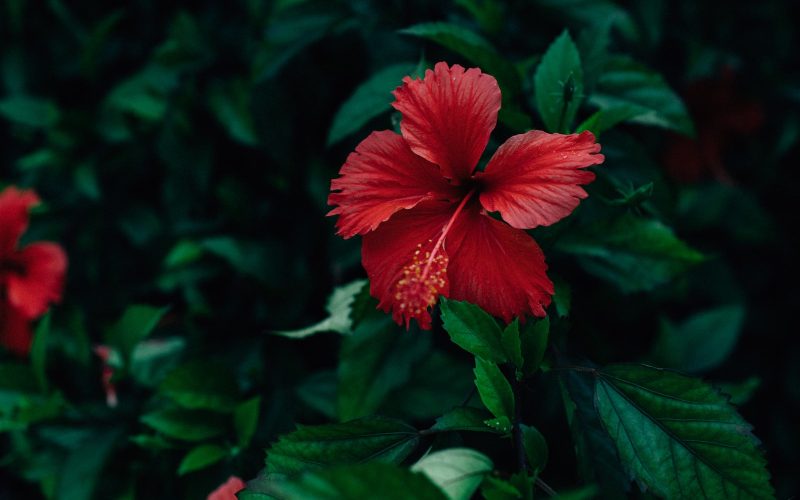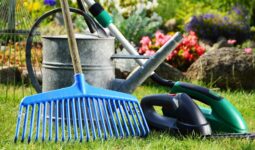A garden has many perks and benefits, including increased peace of mind from knowing that fruits and vegetables are growing outside your home.
Having a garden also helps you to appreciate what’s in season and to learn how to cook new recipes using the available products.
If you live in an area where it frequently experiences droughts or other dry seasons, your garden could also be at risk.
Fortunately, having some best drought tolerant plants in your garden can help reduce the frequency of these dry seasons.
This article will explore the best drought tolerant plants for your yard and other gardens.
1. Cactus Mughalai
The Cactus Mughalai, also known as the Indian barrel cactus, is an excellent plant for dry gardens and landscapes.
It can withstand poor soil conditions and long periods of drought but can also tolerate occasional flooding.
It thrives in heat, humidity, and full sunlight, making it a perfect choice for southern climates.
The Cactus Mughalai is not a cactus but a succulent instead. Succulents are very different from cacti, which are usually capable of producing a new plant generation every few years.
The Cactus Mughalai is a slow-growing plant, but it will reach a large size in a relatively short time.
It can easily grow up to 10 feet tall. It has a wide, rounded top and a bottom that is more narrow and elongated.
2. Zanzibar Rose
Zanzibar rose is also known as the Indian climbing rose. It is native to southern India, Sri Lanka, and Africa. It is a climbing plant that can grow up to 6 feet in height.
This plant grows best in warm climates, with an optimal temperature range of 70 to 85 degrees Fahrenheit.
It is a deciduous plant that loses its leaves in the fall and grows new leaves in the spring.
Zanzibar rose has fragrant flowers in various colors, including red, yellow, orange, purple, and pink.
The flowers are small but spherical and very wide in shape. This makes it a great choice for gardens with no large space to accommodate a large plant.
3. Dwarf Date Palm
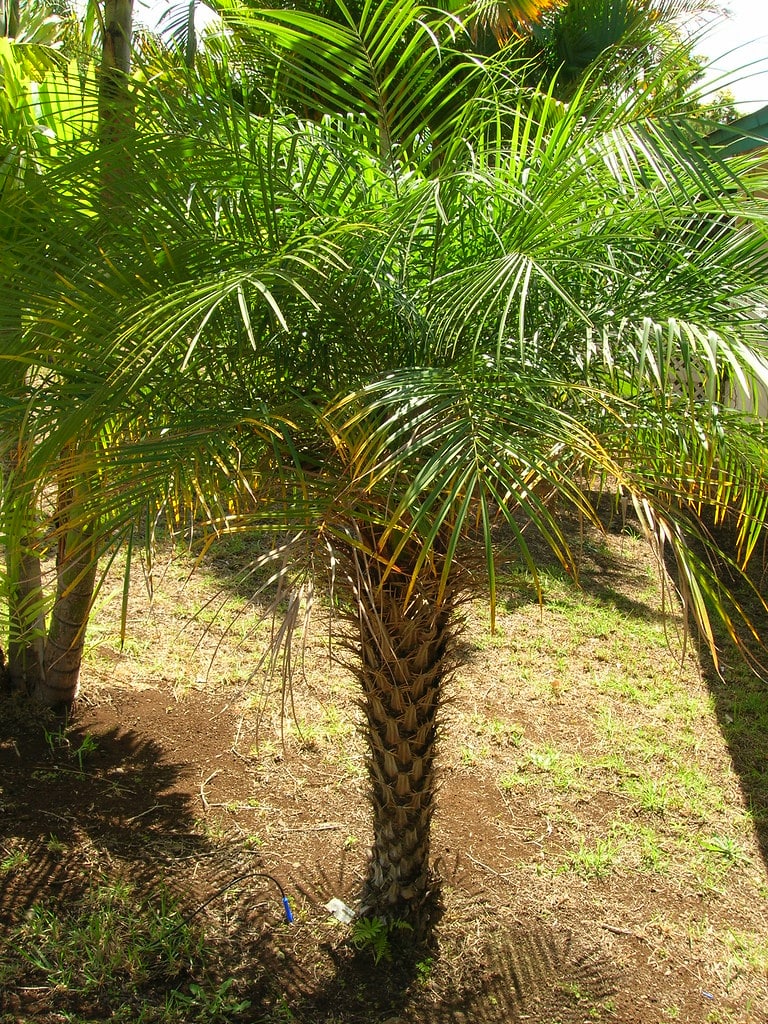
Dwarf date palms are among the best drought-tolerant plants.
These palms are native to the Middle East and West Africa but are also popular as landscape plants in California.
This is probably because these trees can survive in many soil conditions, including poor and rocky soil.
Although these palms are known for their ability to withstand extreme drought, they can also handle relatively frequent light watering.
They also tolerate warm temperatures, making them great choices for tropical gardens.
Dwarf date palms grow best in areas that receive at least six hours of sunlight daily. These palms are mature when they reach a height of about 4 feet. They can live for up to 70 years.
4. Blue Mist Shrub
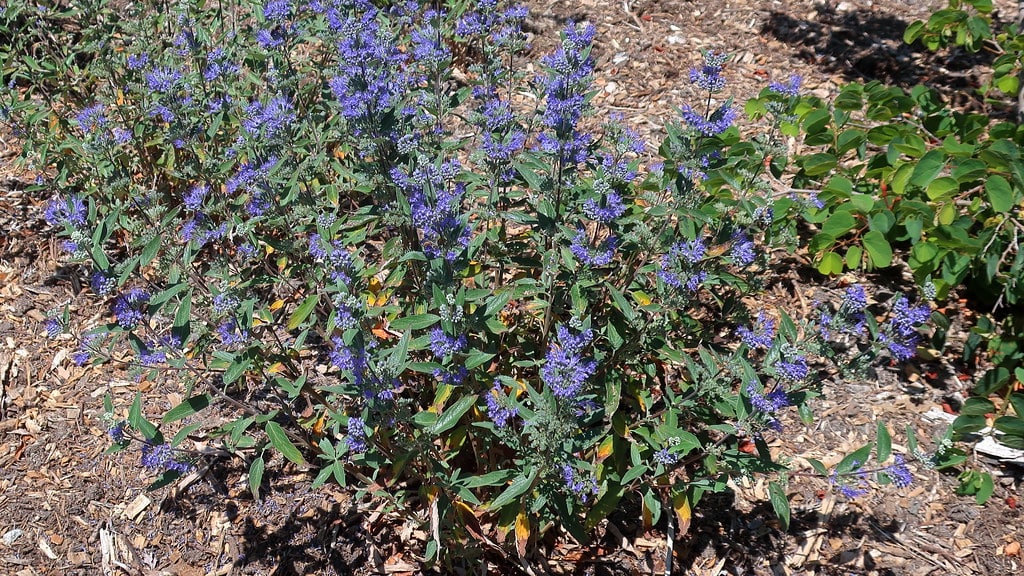
Blue mist shrubs are native to the mountains of central China. In the United States, they are often grown as landscape shrubs.
These shrubs are drought tolerant and also tolerate limited irrigation.
Blue mist shrubs do best in full sun or partial shade and in soil that is well-drained but not rocky or sandy.
These shrubs can reach a height of about 3 feet. They have small leaves and fragrant flowers.
These shrubs are ideal for small gardens or patios and are great for adding color and fragrance to your outdoor space.
Blue mist shrubs bloom all year, though their flowers are particularly fragrant during the winter.
This makes them a great choice for outdoor spaces that do not get a lot of sunlight in the winter.
These shrubs also do well in pots and can be planted in a large space without forcing them to grow in a compact shape.
5. Bottlebrush Turmeric Curl
Bottlebrush is a very popular landscape plant in the United States.
It is also one of the best drought tolerant plants that can thrive in various soil and weather conditions.
Bottlebrush is native to central Asia and is often used as a hedge or natural barrier in European gardens.
It was brought to the United States as an ornamental plant and is now used as a landscape shrub.
It can grow to a height of about 4 feet, but it is often pruned back so that it can grow in a small space without taking up too much room.
Bottlebrush is very drought tolerant but does well in areas with occasional flooding. It also tolerates temperatures that are a little too warm for other plants.
6. Provence Rosemary Mint
Provence rosemary mint is a lovely plant native to southern France and northern Italy.
A perennial shrub grows best in full sun or partial shade. It is drought tolerant and also tolerant of light frosts.
This plant has small, fragrant white flowers that bloom throughout the summer and fall.
These flowers are very aromatic, making them perfect for adding a fragrance to your outdoor area.
Provence rosemary mint is a great choice for any small space, large enough to accommodate a small shrub.
This makes it a great choice for patios, porches, and other outdoor spaces that do not have large areas to accommodate a large plant.
7. Coral Honeysuckle (Leather Flower)
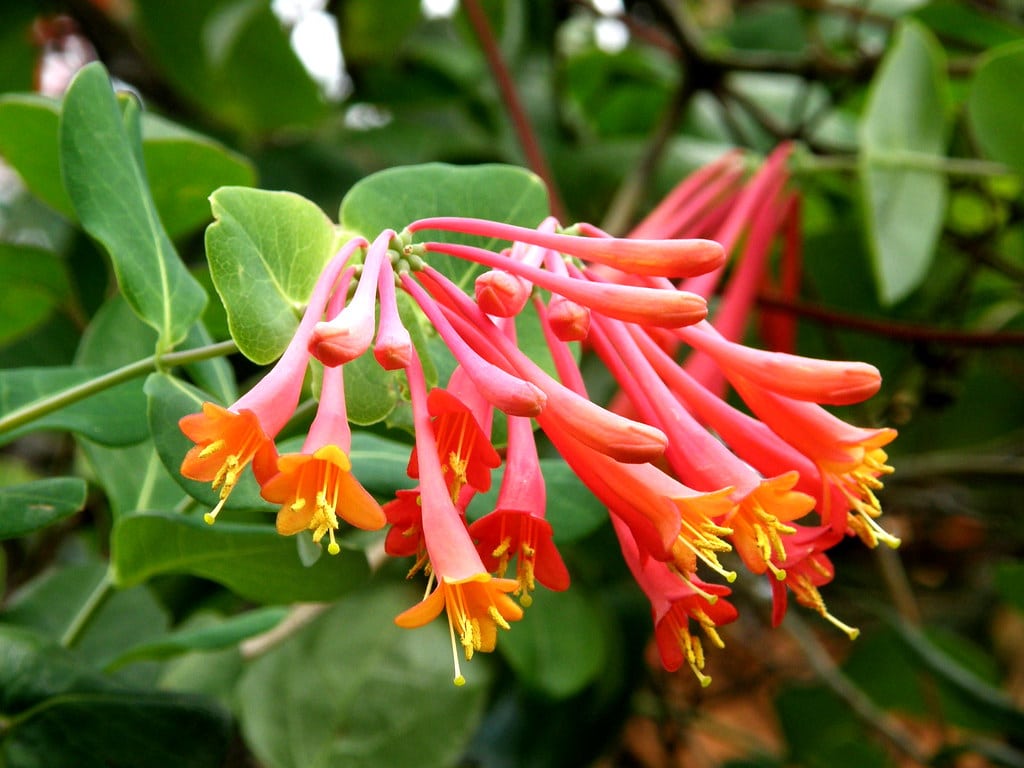
Coral honeysuckle is a deciduous plant that is native to eastern North America. It is also one of the best drought tolerant plants that do well in hot, sunny areas.
Coral honeysuckle is an evergreen plant that grows well in areas with full sunlight. It is a plant that can tolerate some light frosts and can also handle some poor soil conditions.
Coral honeysuckle has fragrant yellow flowers that bloom throughout the spring and summer.
These flowers are often used in southern U.S. gardens to add a little color in the spring and provide continuous fragrance throughout the summer.
8. Poppy Mallow (Strawberry Clover)
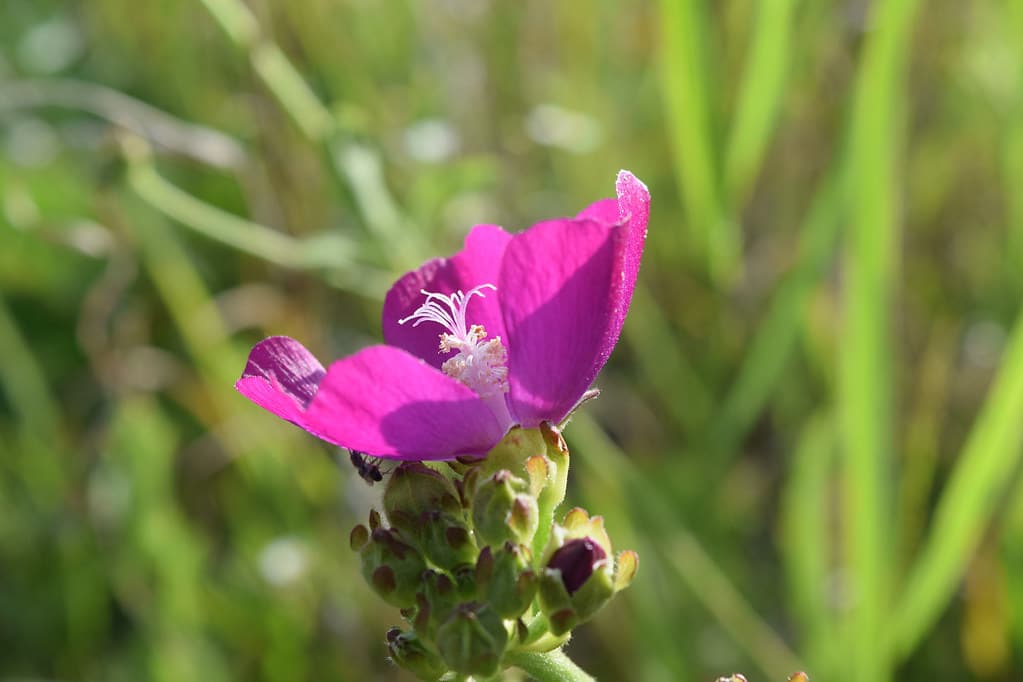
Poppy mallow is a bright and cheerful perennial plant native to western North America.
It is also one of the best drought tolerant plants that can grow in poor soil conditions.
Poppy mallow is a perennial plant that grows best in full sun. It is a plant that tolerates some light frosts and is also tolerant of some poor soil conditions.
Poppy mallow has fragrant white flowers that bloom throughout the summer.
These flowers are often used in southern U.S. gardens to add a little color in the spring and summer and provide constant fragrance throughout the year.
9. Provence Rosemary Mint (Aromatic Mint)
If you like the smell of fresh herbs but don’t have a lot of space in your yard for an herb garden, aromatic mint is a great choice.
It’s a perennial that makes a beautiful, fragrant hedge.
The strong scent will smell indoors and outdoors, so you don’t have to worry about having the scent too close to your nose.
It’s great for infusing your home with herbs, including rosemary, sage, and thyme. It’s also perfect for making sachets and potpourri.
Provence rosemary mint is a perennial herb with fragrant, pink-tinged flowers. It grows 6 to 9 feet tall and wide and can be used indoors and outdoors.
It’s easy to grow and thrives in various climates, making it a great choice for areas with both hot and cold winter weather.
10. Blueberries
Blueberries are one of the best drought tolerant plants for your yard. They are easy to grow, not hard to find, and have a delicious taste.
Even better, they are low in calories, making them a great choice for those who want to lose weight while maintaining a nutritious supply of vitamins and nutrients.
Blueberries are native to North America and produce delicious berries year-round. They are not too difficult to grow and are a good choice for new gardeners.
Blueberries come in a wide range of varieties, from high-production to dwarf. Varieties that are designed for colder climates generally have a shorter growing season.
At the same time, those suitable for warmer areas tend to produce larger berries in a given season.
Blueberry bushes are commonly grown in a combination of containers and the yard, though you can also grow them in a berry patch or as a bush in a pot.
11. California Fan Palm
California fan palms are a great choice for anyone in an area with a lot of hot weather.
These palms don’t do well in frost or below-freezing temperatures and are best suited to areas with mild winters.
They are fast-growing, require little care, and produce large green leaves ideal for decorative and edible purposes.
These palms grow well in pots and make a striking statement in any patio or garden setting. California fan palms are one of your yard’s best drought tolerant plants.
They are fast growing and require little care and make a great choice for those who don’t have a lot of space in their yards.
They have large green leaves that are both decorative and edible.
12. Chinese Date Plant
Chinese date plants are native to China and are considered one of the best drought tolerant plants for your yard.
These plants produce edible fruits when dried, making them a great choice for people who want to expand their food supply during droughts.
Unlike other edible plants, Chinese date plants don’t require much care and can be easily grown indoors or in pots outside.
They also grow well in areas that experience moderate to hot weather.
They are drought tolerant, don’t require much care, and produce edible fruits that don’t spoil when they are not in season.
13. Echinacea
The echinacea is a great choice for people living in regions that experience periods of drought.
This herb is well-known for its ability to withstand low amounts of water and even low light levels.
The echinacea is a perennial and is extremely easy to grow from seed.
The echinacea is best for people who don’t have a lot of garden space and is a great low-maintenance choice for people who live in apartments.
14. Marigold
The marigold is a great choice for people who live in regions that experience extended periods of drought.
It is one of the best drought tolerant plants. This herb can tolerate low amounts of water, as well as low light levels.
The marigold is low-maintenance and is extremely easy to grow from seed.
It also has a variety of other uses, making it a great choice for people who don’t have a lot of space in their gardens.
15. Geranium
Geraniums are low-maintenance perennials and are great choices for people who live in areas that experience extended periods of low rainfall.
They are low-growing perennials that can be grown as a ground cover, an annual, or a shrub.
They prefer full sun but can handle some exposure to light, too. The geranium flowers are edible and have a strong citrus scent that is commonly used in cooking.
16. Japanese Maple
The Japanese maple is a great choice for people who live in regions that experience extended periods of drought.
This deciduous plant can tolerate low amounts of water, light, and even air pollution.
The Japanese maple will tolerate various soil conditions and even thrive in rocky or sandy soil.
The Japanese maple is extremely easy to grow and can be propagated from cuttings, making it a great choice for people who don’t have a lot of garden space.
17. Water Chestnut
This is one of the best drought tolerant plants that can tolerate prolonged periods of very low water conditions and, as the name suggests, can even get by on as little as a cup each day.
Water chestnut is a great plant for areas with consistently low amounts of rainfall.
The plant does best in areas that receive less than an inch of rain per month but will tolerate a drier climate if needed.
It makes an excellent companion plant for cucumbers, beans, and squash. The plant is relatively fast-growing, so you can expect to harvest fruits in 4 to 6 months.
The fruits look like large green apples and are an excellent addition to salads and other summer dishes.
Water chestnut is not fussy about soil conditions. It can be grown in pots or on the ground but needs full sun and well-drained soil.
It can be grown indoors during winter, although it is unsuitable for hot, humid climates.
18. Rubber Tree
Rubber trees are amazing plants. They can withstand long periods of drought and even low seasonal watering.
These trees are so good for the environment because they can grow in areas where other crops would not survive.
Rubber trees can be found in areas that receive between 1 and 10 inches of yearly rainfall. This means rubber trees are great for arid regions.
However, even in wetter regions, the trees can thrive. Rubber trees are not picky when it comes to soil conditions.
They can be grown indoors or outdoors and will not flower or produce fruit if planted in the shade.
Rubber trees are one of the best drought tolerant plants suited for tropical climates, but they can tolerate a wider range of climates than most other tropical plants.
These trees like heat, humidity, and plenty of sunlight. Rubber trees grow best in tropical climates with a minimum and maximum temperature of between 60 and 80 degrees Fahrenheit.
They will grow in various soil conditions, but the best results are obtained in well-drained soil.
19. Camelia Sinensis (Green Tea)
Green tea is one of the best drought tolerant plants. The leaves of this plant can hold up to three times their weight in water. The leaves can be used fresh or dried and stored for later use.
Steeping the leaves in water will make a refreshing beverage, but the leaves can also be used to make herbal remedies, shampoo, and insect repellent.
There are wide varieties of green tea, but the best drought tolerant varieties tend to be the Camellia Sinensis species.
These plants are tolerant of very low amounts of water and will survive if given no water.
The best drought tolerant varieties of green tea come from the Fong Chun, Hojia, and Wuyi species.
These come from the Fujian province of China, where the tea is grown on steep mountainsides with extremely limited rainfall.
The best drought tolerant varieties of green tea also come from Sri Lanka, where tea is grown on the higher slopes of the central hills.
20. Salvia Hispanica (Spanish Sage)
The leaves of this herb can be steeped in water to make a refreshing drink, but the plant can also be used for making herbal remedies and in potpourri mixtures. The herb does well in zones nine through five.
The plant is great for areas that receive less than 10 inches of rain annually. It can also be grown indoors as a houseplant.
Salvia Hispanica is one of the best drought tolerant plants for gardens that receive less than 10 inches of rain annually.
The plant is native to Spain and considered a origami sage descendant. This herb can be easily grown in pots or grown in the ground.
When grown in containers, take care not to overwater the plant. This sage prefers well-drained soil with a pH level of 6 to 7.
Salvia is best grown in full sun, although it will tolerate some shade. It can be grown indoors during winter, although it will not produce flowers or make an excellent pot plant.
21. Blackcurrant
Blackcurrants are one of the best drought tolerant plants, as they can go for months without a drop of water.
The fruit is edible and used to make jams and syrups but also great for juicing. The plant is best suited for growing in zones five through nine.
The plant is best suited for arid regions, as it can tolerate brief amounts of moisture, but will be best in areas that receive less than 10 inches of rainfall each year.
As with other berries, blackcurrants are not great in wetter climates. Blackcurrants are best grown in well-drained, sandy soil.
The plant requires full sunlight and tolerates some shade. Blackcurrants can grow in pots or in the ground.
22. Hibiscus
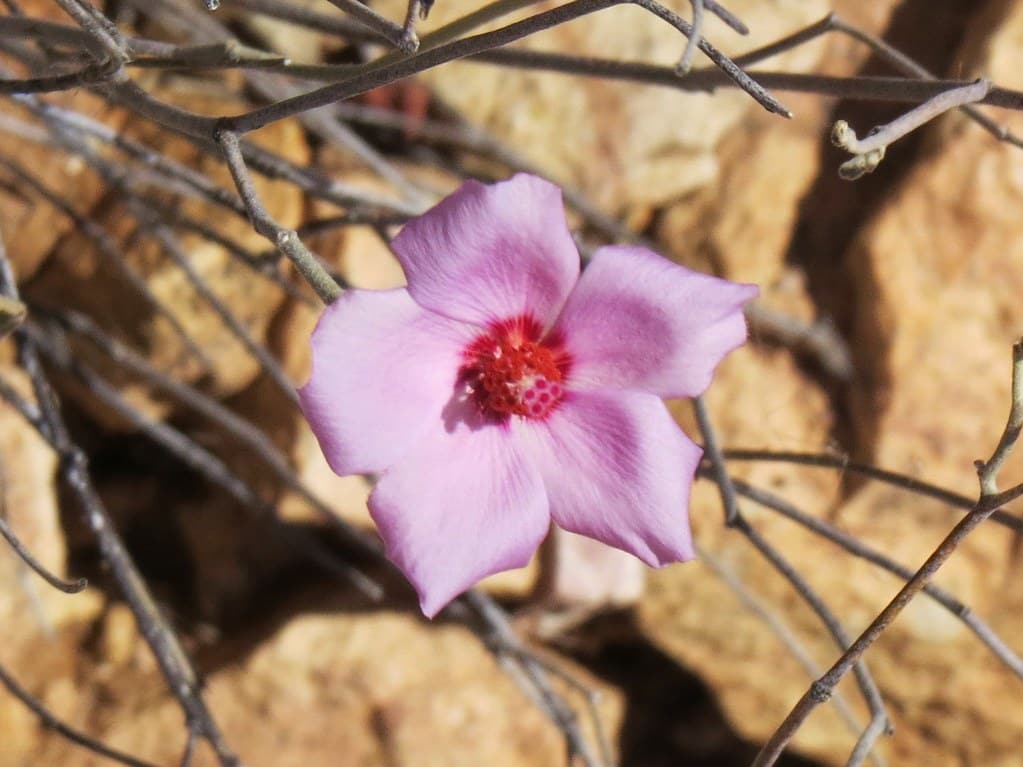
Hibiscus are low-maintenance perennials commonly used as ground covers and in containers.
They can tolerate varying amounts of light and are great for shady locations, as well as areas that experience minimal amounts of sun exposure.
Hibiscus flowers are edible and are commonly used in tea. The hibiscus is one of the best drought tolerant plants, and it can also grow in regions prone to experiencing extended periods of low rainfall.




